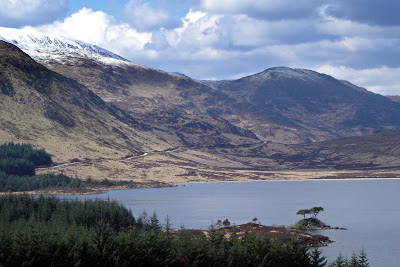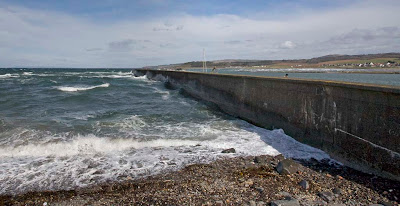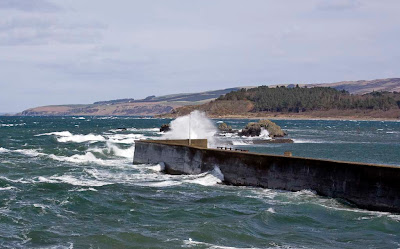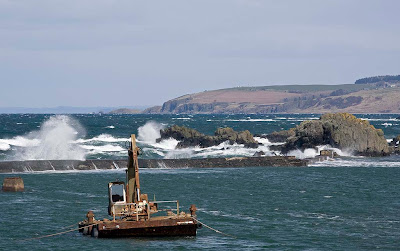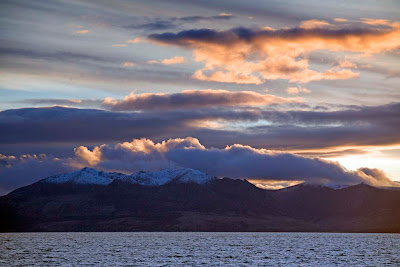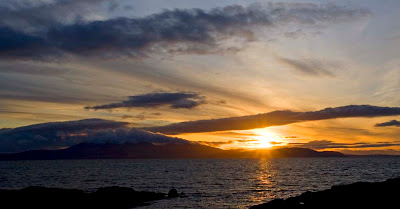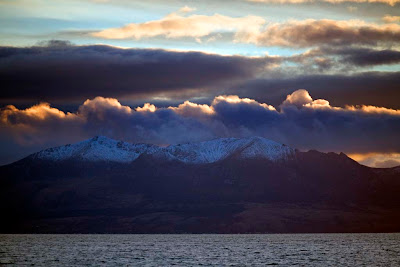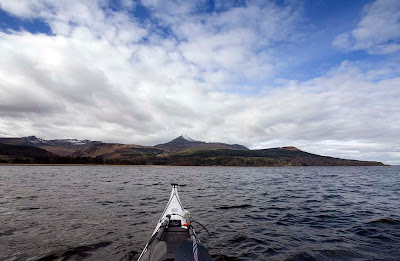
Over the last year the staff at seakayakphoto.com have been doing quite a lot of paddling in tidal waters. Robert Burns our National Bard wrote "Nae Man can tether time nor tide..." and he was right.
We have often been frustrated when slow service in a sea kayaking pub has delayed our departure and caused us to miss a tidal window. It's no fun battling through even a short tidal channel against the flow and you certainly don't want to hang around until the tide changes. Another scenario involved an attractive looking pub at the head of a sea loch with a narrow entrance out of which the ebb was pouring. We paddled like fury but got nowhere, we had missed the tide and were just about to miss closing time. What was required was a little lateral thinking.

Have you noticed how the capacity of rechargeable NIMH batteries has been creeping up?

Now imagine ten of these babies in series in a battery box snug in your day hatch. Yes that makes 27amp hours of juice! That's easily enough to kill a herd of elephants!! What would you do with that amount power? Play all 8000 songs on your iPod? Well more lateral thinking is required.

Rule have just released a 12v 5000 gallon per hour bilge pump. That's over 5 litres per second. Or put another way, 300kg of water shifted every minute. A plan was hatching. I took my ideas to
Geoff Turner at Kari-Tek...

An intake was drilled in the cockpit floor behind the seat. Geoff made a moulding into which the pump fitted. The outlet hose runs back through the day hatch into a nicely faired tube at the front of a modified Hydro Skeg box. It points back... YES the Kaya-Jet was born!

Tony and I took a Kaya-Jet equipped Nordkapp LV to our favourite tidal playground in the
Sound of Luing. At full spring ebb it just wasn't possible to paddle uphill against the tide. Tony tried about 6 times, I tried about 3 and we were both knackered.
Now the real test. Tony pressed the 25amp switch and whoosh, the kayak surged forward, he still paddled as hard as he could of course, but the difference was he was through the channel in less than 45 seconds, all together the pump had only run for just over 90 seconds! Success!

In further trials on the measured mile in the Clyde (note the white transit posts on the hill) we have found that the pump draws about 15 amps average over the mile. That means it will run for nearly 2 hours!
Geoff had also built in a slider into the moulding that the pump intake sits in. If you are out of the boat after a capsize, slide the slider to port. This closes the under hull intake and now the pump sucks from the cockpit. Renter roll and your boat is full of water but now you have the most powerful pump on the planet and it empties in a jiffy at the same time as supplying forward thrust! One caveat for gentlemen, I wouldn't risk firing up in pump mode if you are wearing only loose boxers. There's a lot of suction down there!
I know this is only a prototype and I have to declare a vested interest but, all the same, I award Kaya-Jet, this innovative new design, 10/10.
Already I can hear the howls of protest from the traditionalists, who chew their own catgut to stitch their skin boats together. I do not mind, sea kayaking is a broad church and I am certainly not a traditionalist!
Look out for Kaya-Jet in a kayaking store near you in about 18 months time. If you really can't wait that long, we have another prototype that need testing with a bigger pump and more batteries!







